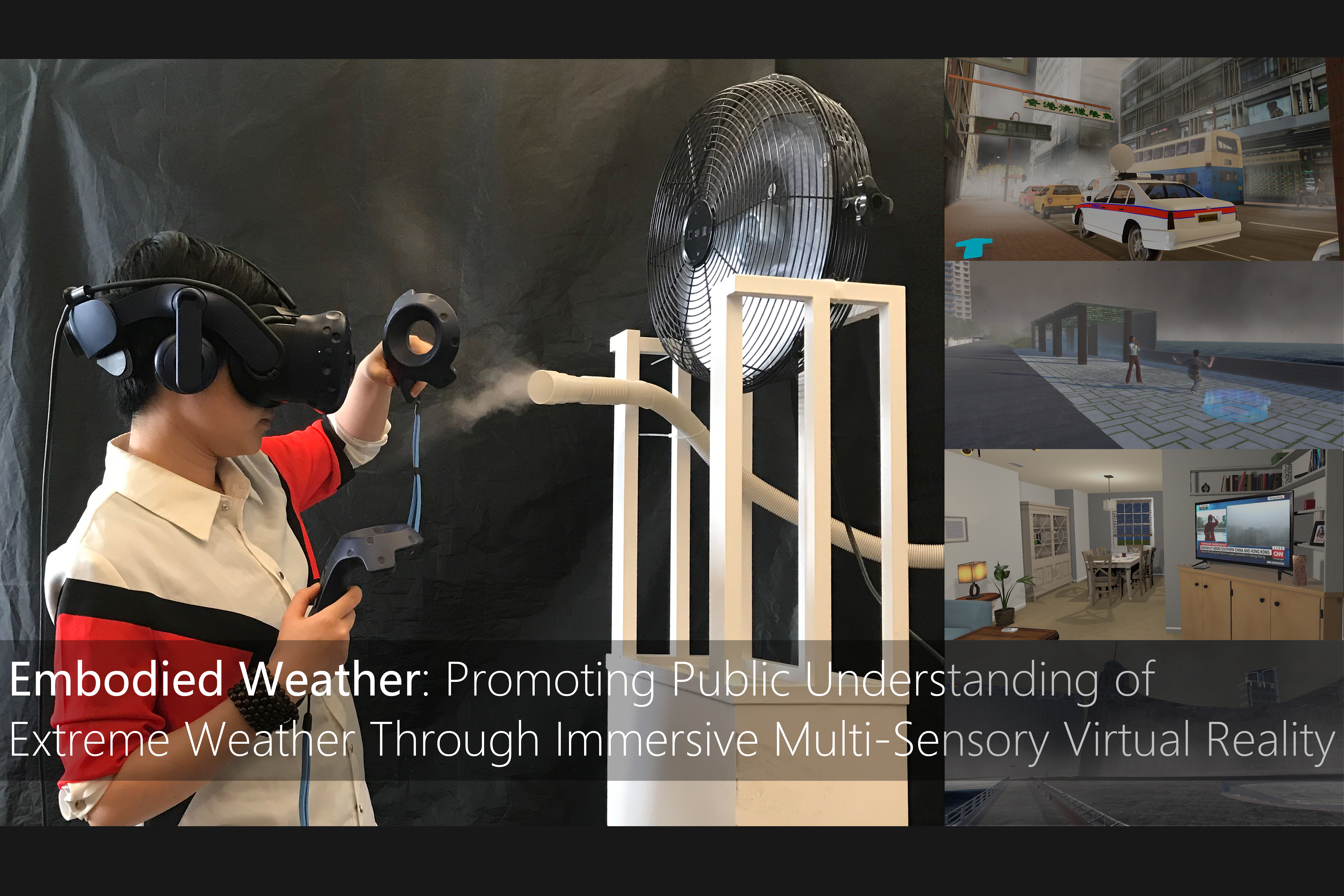Embodied Weather
Promoting Public Understanding of Extreme Weather Through Immersive Multi-Sensory Virtual Reality
- Project Period: Feb. 2019 - Present
- Project Duration: One Year
- Project Supervisor: Kening Zhu
- Project Type: Group Project
Introduction
Embodied Weather is a multi-sensory Virtual Reality (VR) Interaction for promoting the Hong Kong public's understanding of typhoons, a common type of extreme weather in Hong Kong. The aim is to educate the general public about the danger of typhoons and promote everyday low-carbon behaviors. Embodied Weather used visual, audio, and tactile (wind and rain) feedbacks to simulate the experience of a typhoon in Hong Kong. Also, we also developed an interactive home environment to prob user's usage of power in their daily lives. According to the different usage of energy, the system predicts and simulates future weather through visual, audio, and tactile sensation.
System Design
Embodied Weather was developed using Unity 2019.1, and deployed through the HTC Vive VR system, including a head-mounted display (HMD), two Vive handheld controllers, and two base stations. To simulate the real-life experience of a typhoon, we took the reference data (i.e., wind speed, rain volume, etc.) from Hong Kong Observatory. Then, we transformed the records into five different strengthes and provided different sensory feedbacks. We use an Arduino Mega board to control an external fan which provides wind feedback and a humidifier which offers rain feedback.
In the virtual world, the user could perform the movement of swinging hands with the VR controllers as a controlling approach for walking in VR. We also built an interactive home environment which allows users to control the power usage of the electrical home appliances, such as TV, air conditioner, and water heater, based on their everyday practices. The user could turn on or off each appliance by touching it with VR controller and pressing the button on the controller. More importantly, we implemented an prediction algorithm from the historical climate data from Hong Kong Observatory. The system simulates the future environment of Hong Kong according to the user's energy usage in VR.
My Role In The Project
I serve as a game developer in our team. I dedicate myself to design and implement different interactive approaches in VR interaction by writing programs and making animations in Unity 3D. I also was a coordinator between our group and the Hong Kong Observatory. I engaged in a meeting once two months to negotiate the set design, game interaction, and animations in our game.
Review
From this project, I understood the development of Virtual Reality in Unity 3D from zero to one and interaction design. The game project is big and different from general software development. I attempt to structuralize the project to make the next developer easily maintain the project. I also gradually learned the process of creating a simple VR prototype to demonstrate it to the clients (HK observatory). This project will facilitate me to design and develop VR projects in the next time.
This project keeps continuing now. This project is going to be displayed in the VRCAI conference, Brisbane and the Hong Kong Marine Museum in November 2019. I am going to simulate more types of weather, such as drought and flood, in the extreme weather.
